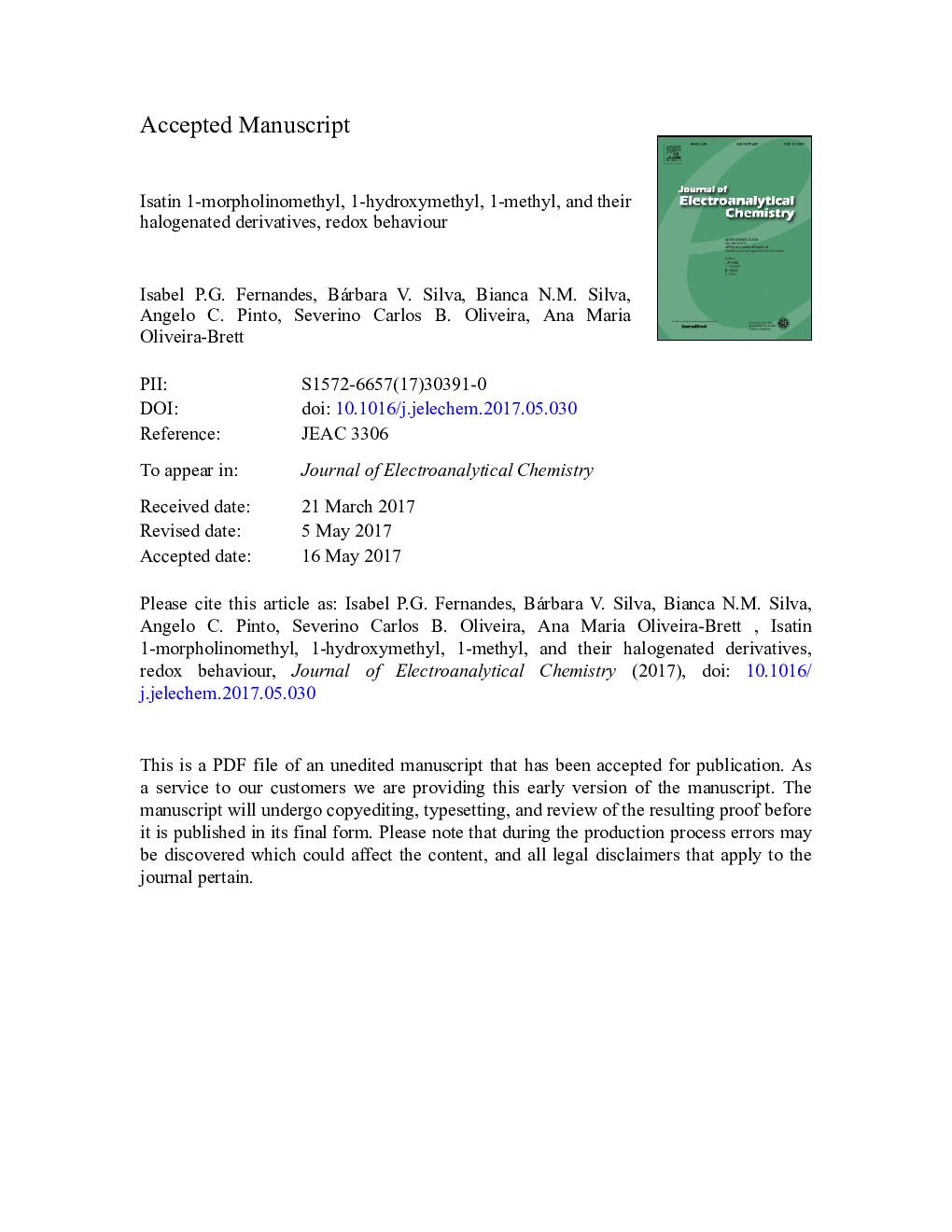| کد مقاله | کد نشریه | سال انتشار | مقاله انگلیسی | نسخه تمام متن |
|---|---|---|---|---|
| 6662079 | 1426563 | 2018 | 32 صفحه PDF | دانلود رایگان |
عنوان انگلیسی مقاله ISI
Isatin 1-morpholinomethyl, 1-hydroxymethyl, 1-methyl, and their halogenated derivatives, redox behaviour
ترجمه فارسی عنوان
ایزتین 1-مورفولینیمتیل، 1-هیدروکسی متیل، 1-متیل و مشتقات هالوژنه شده آنها، رفتار بازتوکس
دانلود مقاله + سفارش ترجمه
دانلود مقاله ISI انگلیسی
رایگان برای ایرانیان
کلمات کلیدی
مشتقات ایزتین، مورفولین متیل، هیدروکسی متیل، متیل، رفتار مجدد، کربن شیشه ای ولتاژ سنجی،
موضوعات مرتبط
مهندسی و علوم پایه
مهندسی شیمی
مهندسی شیمی (عمومی)
چکیده انگلیسی
Isatin methyl derivatives have several pharmacotherapeutic applications, such as antibacterial, antifungal, antiviral, anticonvulsants and anticancer activities. The electrochemical behaviours of thirteen isatin-substituted derivatives with different functional groups, such as isatin 1-morpholinomethyl, isatin 1-hydroxymethyl, and isatin 1-, 5- or 7-methyl, and their halogenated derivatives, in phosphate buffer pHÂ =Â 7.2, at a glassy carbon electrode, by cyclic, differential pulse and square wave voltammetry, were investigated. The oxidation mechanism of all isatin derivatives occurred in two consecutive irreversible charge transfer pH-dependent reactions. The first anodic reaction was on the benzene ring, with the generation of one hydroxyl group attached to the ring, which was oxidized in the second step to para- and/or ortho-quinone derivatives, and/or polymeric products. The reduction mechanism of all isatin derivatives, was an irreversible cathodic process, dependent on pH and the presence/absence of attached halogenated groups. The isatin derivatives reduction, in the absence of halogens, caused the irreversible cleavage of the carbonyl group, at the position C3, in the heterocyclic ring, and, in the presence of halogens, the cathodic peak corresponded to the carbon-halogen bond reduction. The functional groups attached to the isatin ring at the 1-position, morpholinomethyl-, hydroxymethyl- and methyl- are not electroactive, and do not affect considerably the isatin derivatives redox mechanism, since the oxidation occurs at the benzene ring, and the reduction at the carbonyl C3-position.
ناشر
Database: Elsevier - ScienceDirect (ساینس دایرکت)
Journal: Journal of Electroanalytical Chemistry - Volume 812, 1 March 2018, Pages 143-152
Journal: Journal of Electroanalytical Chemistry - Volume 812, 1 March 2018, Pages 143-152
نویسندگان
Isabel P.G. Fernandes, Bárbara V. Silva, Bianca N.M. Silva, Angelo C. Pinto, Severino Carlos B. Oliveira, Ana Maria Oliveira-Brett,
